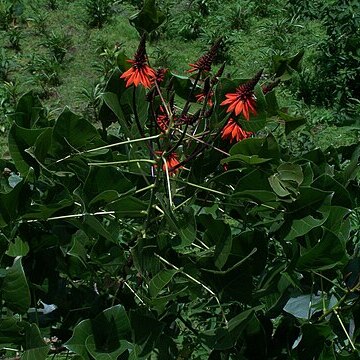A tree. The trunk and branches have prickles. The leaves have leaflets and the end leaflet is kidney shaped and 8-20 cm long. The base is heart shaped. The side leaflets are broadly heart shaped. The flowers are in the axils of the last leaf. There are 3 flowers in a cluster. The are red and hang down. The pod is curved and 12-19 cm long by 2-3 cm wide. It has a beak at the end. There are 5-10 seeds. They are white or brown and kidney shaped. They are 2 cm across.

